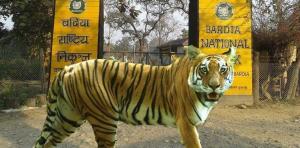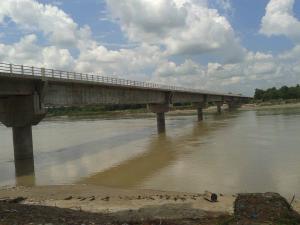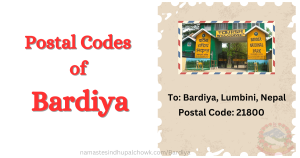
Bardiya National Park
About Bardiya National Park
Bardiya National Park is a major protected area in Nepal, covering 968 square kilometers with an extra 327 square kilometers as a buffer zone. It is the largest national park in the Terai region and rivers like the Karnali and Babai flow through it.
Bardiya National Park is in Lumbini Province (Province No. 5) of Nepal, Bardiya District. The park was established in 1976 as the Karnali Wildlife Reserve and was renamed Bardiya Wildlife Reserve in 1982. In 1988, it became a national park.
Bardiya National Park is famous for its wildlife, including the Royal Bengal Tiger and one-horned rhinoceros. It’s great for birdwatching with 230 bird species and has beautiful landscapes with rivers. The park also focuses on conservation and working with local communities.
Royal Bengal Tiger in Bardiya National Park
Bardiya National Park is known for its high tiger population. In 2022, the park had about 125 adult tigers, making it one of the best places in Nepal for tigers and important for global tiger conservation.
Bardiya National Park is home to some of the world's most endangered species and is famous for its diverse ecosystems. One-horned rhinoceroses, which were brought here from Chitwan, thrive in Bardiya. The park is also home to dolphins, Bengal tigers, and many other types of wildlife. The park is great for birdwatching, with 230 bird species and 30 mammal species, including the Royal Bengal Tiger, one-horned rhinoceros, elephants, and various reptiles.
The park and nearby residents work together to manage the buffer zone. They take care of the natural resources and start community projects. The best times for an elephant ride are in the morning and late afternoon when you can explore off the main paths and see the park in a new way. The Karnali River is the best place to spot Gangetic dolphins. The beautiful Babai Valley is home to rhinos, tigers, and elephant species in the wilderness.
Bardiya National Park from Kathmandu
The distance from Kathmandu to Bardiya National Park is approximately 500 kilometers (310 miles) by road. The journey can take around 12-14 hours by bus or about 1 hour by plane to Nepalgunj, followed by a 2-3 hour drive to the park.
- By Bus: It takes about 12-14 hours.
- By Airplane: It’s a 1-hour flight to Nepalgunj, then a 2-3-hour drive to the park.
Essential Tips for Visiting Bardia National Park
At Bardia National Park, visitors can explore a museum and learn about Tharu culture. You can use phones in many areas of the park. If you’re driving, make sure you have enough fuel. It’s also wise to bring a full first-aid kit. There’s a health post in the Thakurdwara community near the park headquarters. Lodges nearby offer accommodations and services for tourists.
Bardiya has three main climates: hot and dry from April to July, dry from October to April, and wet from July to September.
Contact Details
Bardiya National Park Tickets cost 1500 rupees per person per day, including tax, and are valid for one day only.
Headquarters: Thakdwara, Bardiya, Lumbini, Nepal
Phone no.: 084-402012
Email: bardiyanationalparkoffice@gmail.com




